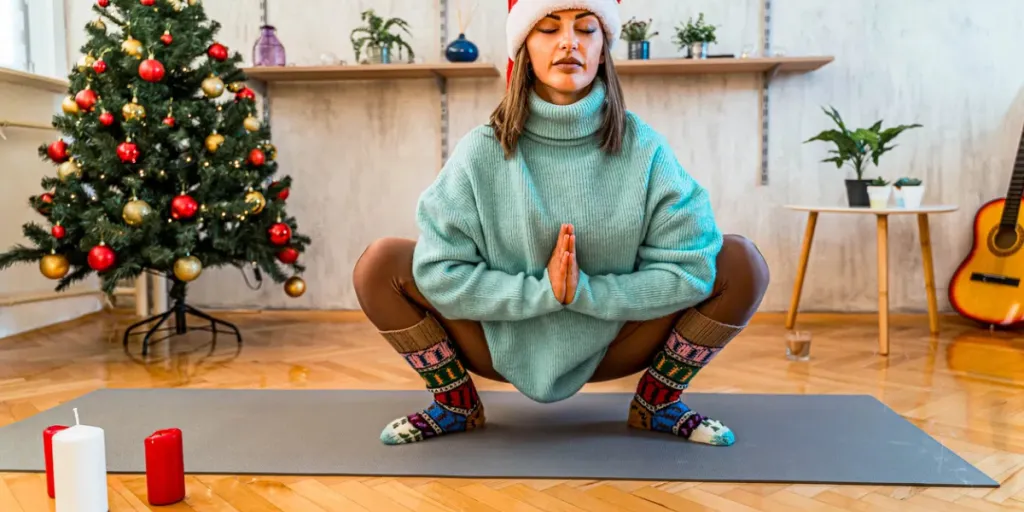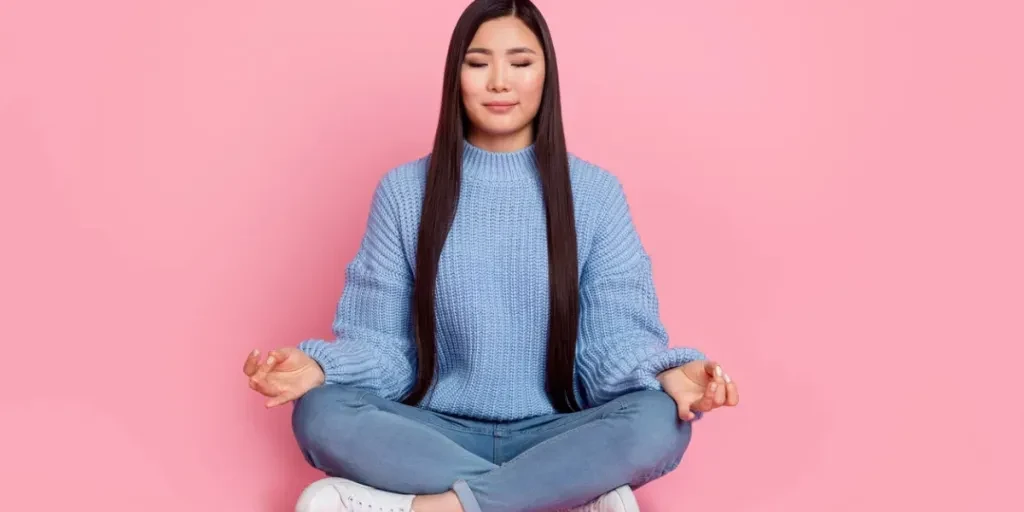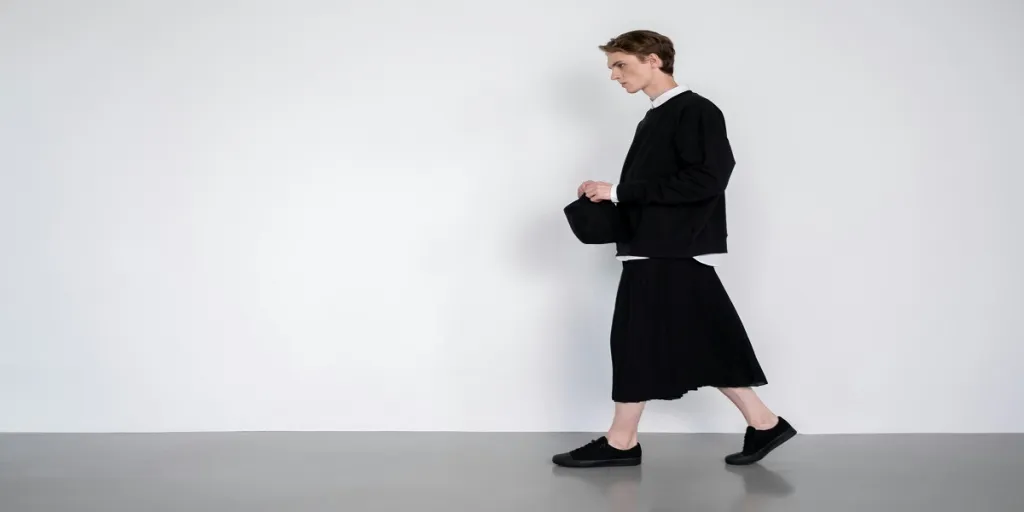Sweater yoga telah menjadi bagian penting dari lemari pakaian yogi modern, menawarkan perpaduan sempurna antara kenyamanan, fungsionalitas, dan gaya. Seiring dengan semakin populernya yoga, permintaan akan pakaian yang mendukung praktik ini pun meningkat. Sweater yoga, dengan desain dan fiturnya yang unik, menjadi yang terdepan dalam tren ini.
Daftar Isi:
– Tinjauan Pasar: Meningkatnya Permintaan Sweater Yoga
– Bahan dan Kain: Tulang Punggung Kenyamanan dan Fungsionalitas
– Pilihan yang Berkelanjutan dan Ramah Lingkungan
– Kain Bernapas dan Menyerap Kelembapan
– Desain dan Fitur: Memadukan Gaya dengan Kepraktisan
– Potongan Inovatif untuk Meningkatkan Mobilitas
– Desain Serbaguna untuk Berbagai Latihan Yoga
– Tren Musiman dan Warna: Tetap Fashionable Sepanjang Tahun
– Warna Populer untuk Musim yang Berbeda
– Adaptasi Musiman dalam Desain dan Kain
Tinjauan Pasar: Meningkatnya Permintaan Sweater Yoga

Pasar pakaian yoga mengalami pertumbuhan yang signifikan, didorong oleh meningkatnya jumlah praktisi yoga dan meningkatnya fokus pada kebugaran dan kesehatan. Menurut Research and Markets, pasar pakaian yoga diperkirakan akan tumbuh sebesar USD 18.88 miliar selama tahun 2023-2028, dengan CAGR sebesar 7.36% selama periode perkiraan. Pertumbuhan ini didorong oleh inovasi dalam pakaian yoga, yang mengarah pada premiumisasi produk dan meningkatnya fokus pada inisiatif kebugaran oleh badan pemerintah dan perusahaan.
Khususnya, sweter yoga mengalami lonjakan permintaan karena keserbagunaan dan kenyamanannya. Sweter ini dirancang untuk memberikan kehangatan selama tahap awal dan akhir sesi yoga, sehingga menjadikannya pakaian penting bagi para praktisi. Pasar sweter yoga disegmentasikan berdasarkan jenis produk, pengguna akhir, dan geografi. Segmen pakaian teratas, yang meliputi sweter yoga, diperkirakan akan mengalami pertumbuhan substansial karena semakin banyak konsumen yang mengutamakan kenyamanan dan fungsionalitas dalam pakaian olahraga mereka.
Wawasan regional menunjukkan bahwa Amerika Utara dan Eropa memimpin pasar untuk pakaian yoga, didorong oleh banyaknya praktisi yoga dan fokus yang kuat pada kebugaran dan kesehatan. Kawasan Asia-Pasifik juga muncul sebagai pasar yang signifikan, dengan meningkatnya kesadaran tentang manfaat yoga dan populasi kelas menengah yang terus bertambah yang bersedia berinvestasi dalam pakaian kebugaran premium.
Pemain kunci di pasar pakaian yoga, seperti Adidas AG, lululemon athletica Inc., dan Nike Inc., terus berinovasi untuk memenuhi kebutuhan konsumen yang terus berkembang. Perusahaan-perusahaan ini berfokus pada penggabungan bahan-bahan yang berkelanjutan dan teknik-teknik manufaktur yang canggih untuk meningkatkan kualitas dan fungsionalitas produk-produk mereka. Misalnya, koleksi yoga make space Adidas, yang terinspirasi oleh unsur-unsur api, tanah, angin, dan air, menggabungkan bahan-bahan daur ulang ke dalam desainnya, memenuhi permintaan yang terus meningkat akan produk-produk yang ramah lingkungan.
Tren masa depan di pasar sweter yoga meliputi pengenalan teknologi dan fitur baru yang meningkatkan pengalaman yoga secara keseluruhan. Meningkatnya popularitas pakaian yoga yang disesuaikan dan meningkatnya keanggotaan di klub kesehatan dan kebugaran diharapkan dapat mendorong permintaan lebih lanjut untuk sweter yoga. Karena konsumen terus memprioritaskan kesehatan dan kebugaran, pasar sweter yoga siap untuk pertumbuhan yang signifikan dalam beberapa tahun mendatang.
Bahan dan Kain: Tulang Punggung Kenyamanan dan Fungsionalitas

Pilihan Berkelanjutan dan Ramah Lingkungan
Dalam lanskap industri pakaian yang terus berkembang, keberlanjutan telah menjadi landasan pengembangan produk, khususnya dalam bidang sweater yoga. Permintaan akan bahan yang ramah lingkungan didorong oleh kesadaran konsumen dan tekanan regulasi. Menurut laporan profesional, penggunaan bahan yang berkelanjutan seperti katun organik bersertifikat GOTS, serat selulosa bersertifikat FSC, dan katun daur ulang GRS sedang meningkat. Bahan-bahan ini tidak hanya mengurangi jejak lingkungan tetapi juga menawarkan kenyamanan dan daya tahan yang unggul.
Misalnya, campuran rami dan jelatang semakin populer karena ketahanan alaminya dan dampak lingkungan yang minimal. Serat-serat ini dikenal karena sifatnya yang mudah bernapas dan menyerap kelembapan, sehingga ideal untuk pakaian yoga. Selain itu, penggunaan setidaknya 80% monomaterial dalam pembuatan sweter yoga meningkatkan kemampuan daur ulangnya, yang berkontribusi pada ekonomi sirkular. Pendekatan ini sejalan dengan prinsip perancangan untuk keawetan dan perbaikan, yang memastikan bahwa produk tetap digunakan untuk jangka waktu yang lebih lama dan dapat dengan mudah didaur ulang di akhir siklus hidupnya.
Kain Bernapas dan Menyerap Kelembapan
Fungsionalitas sweater yoga sangat bergantung pada pilihan bahannya. Bahan yang menyerap keringat dan lembap sangat penting untuk menjaga kenyamanan praktisi selama sesi yoga. Menurut wawasan industri, bahan seperti jersey loop-back, yang terbuat dari serat alami, sangat direkomendasikan. Bahan ini meminimalkan kerontokan dan memberikan rasa lembut dan nyaman di kulit.
Selain itu, integrasi teknologi tekstil canggih telah menghasilkan pengembangan kain yang menawarkan kinerja yang lebih baik. Misalnya, kain dua sisi memberikan kehangatan ekstra dan ideal untuk barang lintas musim. Kain ini dibuat agar dapat bernapas dan memberikan isolasi, sehingga cocok untuk berbagai kondisi cuaca. Penggunaan lapisan rib dan pinggiran tubular semakin meningkatkan daya tahan dan daya tarik estetika sweter yoga.
Desain dan Fitur: Memadukan Gaya dengan Kepraktisan

Potongan Inovatif untuk Mobilitas yang Lebih Baik
Desain baju yoga telah berevolusi dengan menggabungkan potongan inovatif yang meningkatkan mobilitas dan kenyamanan. Menurut para pakar industri, tren ke arah potongan yang longgar dan desain yang ergonomis terlihat jelas dalam koleksi terbaru. Lengan raglan, misalnya, merupakan pilihan yang populer karena memungkinkan rentang gerak yang lebih luas, yang sangat penting bagi praktisi yoga.
Selain itu, penambahan fitur seperti detail jahitan pin-tuck dan pinggang yang dikerut tidak hanya menambah efek yang pas tetapi juga meningkatkan kesesuaian dan fleksibilitas pakaian secara keseluruhan. Elemen desain ini memastikan bahwa sweter bergerak mulus mengikuti tubuh, memberikan gerakan tanpa batas selama berbagai pose yoga. Penggunaan ikatan rajutan sendiri yang kontras dan pinggiran tubular di sepanjang kap dan placket menambah sentuhan kecanggihan sambil mempertahankan fungsionalitas.
Desain Serbaguna untuk Berbagai Latihan Yoga
Fleksibilitas merupakan pertimbangan utama dalam desain sweter yoga. Kemampuan untuk beradaptasi dengan berbagai praktik dan lingkungan yoga sangat dihargai oleh konsumen. Menurut laporan profesional, tren terhadap pakaian multifungsi semakin diminati. Misalnya, hoodie mewah yang dapat dikenakan selama sesi yoga dan sebagai pakaian kasual semakin populer.
Desain serbaguna ini sering kali menampilkan elemen seperti kantong kanguru dengan pinggiran, manset, dan keliman, yang memberikan kepraktisan dan gaya. Penggunaan kain dua sisi memastikan bahwa sweter cukup hangat untuk latihan di luar ruangan sekaligus tetap menyerap keringat untuk sesi latihan di dalam ruangan. Selain itu, penggunaan ritsleting yang dapat dibolak-balik dan pengencang berlapis yang tahan benturan meningkatkan fungsionalitas dan daya tarik estetika pakaian.
Tren Musiman dan Warna: Tetap Fashionable Sepanjang Tahun

Warna Populer untuk Musim yang Berbeda
Tren warna memainkan peran penting dalam daya tarik sweter yoga. Menurut perkiraan industri, palet warna untuk pakaian yoga dipengaruhi oleh perubahan musim dan preferensi konsumen. Misalnya, koleksi musim semi dan musim panas sering kali menampilkan warna pastel yang lebih terang seperti Ice Blue dan Aquatic Awe, yang membangkitkan rasa tenang dan tenteram. Warna-warna ini tidak hanya menarik secara visual tetapi juga selaras dengan sifat tenang dari latihan yoga.
Sebaliknya, koleksi musim gugur dan musim dingin cenderung memadukan warna yang lebih kaya dan hangat seperti Sepia dan Warm Amber. Warna-warna ini memberikan nuansa yang nyaman dan mengundang, sehingga cocok untuk cuaca dingin. Penggunaan perpaduan warna dan pola yang halus menambah kedalaman dan daya tarik pada desain, memastikan bahwa sweter tetap modis sepanjang tahun.
Adaptasi Musiman dalam Desain dan Kain
Kemampuan beradaptasi sweter yoga dengan berbagai musim dicapai melalui desain dan pilihan kain yang cermat. Misalnya, selama bulan-bulan yang lebih hangat, kain yang ringan dan menyerap keringat seperti linen dan katun organik lebih disukai. Bahan-bahan ini menawarkan sifat penyerap kelembapan yang sangat baik, sehingga pemakainya tetap sejuk dan nyaman.
Sebaliknya, koleksi musim dingin sering kali menampilkan kain yang lebih berat seperti jersey dua sisi dan campuran wol. Bahan-bahan ini memberikan kehangatan dan isolasi tambahan, sehingga cocok untuk kegiatan di luar ruangan. Penggunaan teknik pelapisan, seperti menggabungkan rompi dan kardigan rajutan, memungkinkan adaptasi yang mudah terhadap perubahan suhu. Selain itu, penyertaan fitur-fitur seperti pinggiran rib dan keliman rib integral meningkatkan kesesuaian dan kenyamanan pakaian secara keseluruhan.
Kesimpulan
Pasar sweater yoga tengah mengalami pergeseran dinamis menuju keberlanjutan, fungsionalitas, dan gaya. Integrasi bahan ramah lingkungan, desain inovatif, dan fitur serbaguna memastikan bahwa pakaian ini memenuhi kebutuhan konsumen yang terus berkembang. Seiring industri terus mengadopsi praktik berkelanjutan dan teknologi tekstil canggih, masa depan sweater yoga tampak menjanjikan. Pembeli bisnis dapat mengharapkan fokus berkelanjutan pada produk berkualitas tinggi, tahan lama, dan modis yang memenuhi beragam permintaan praktisi yoga di seluruh dunia.




